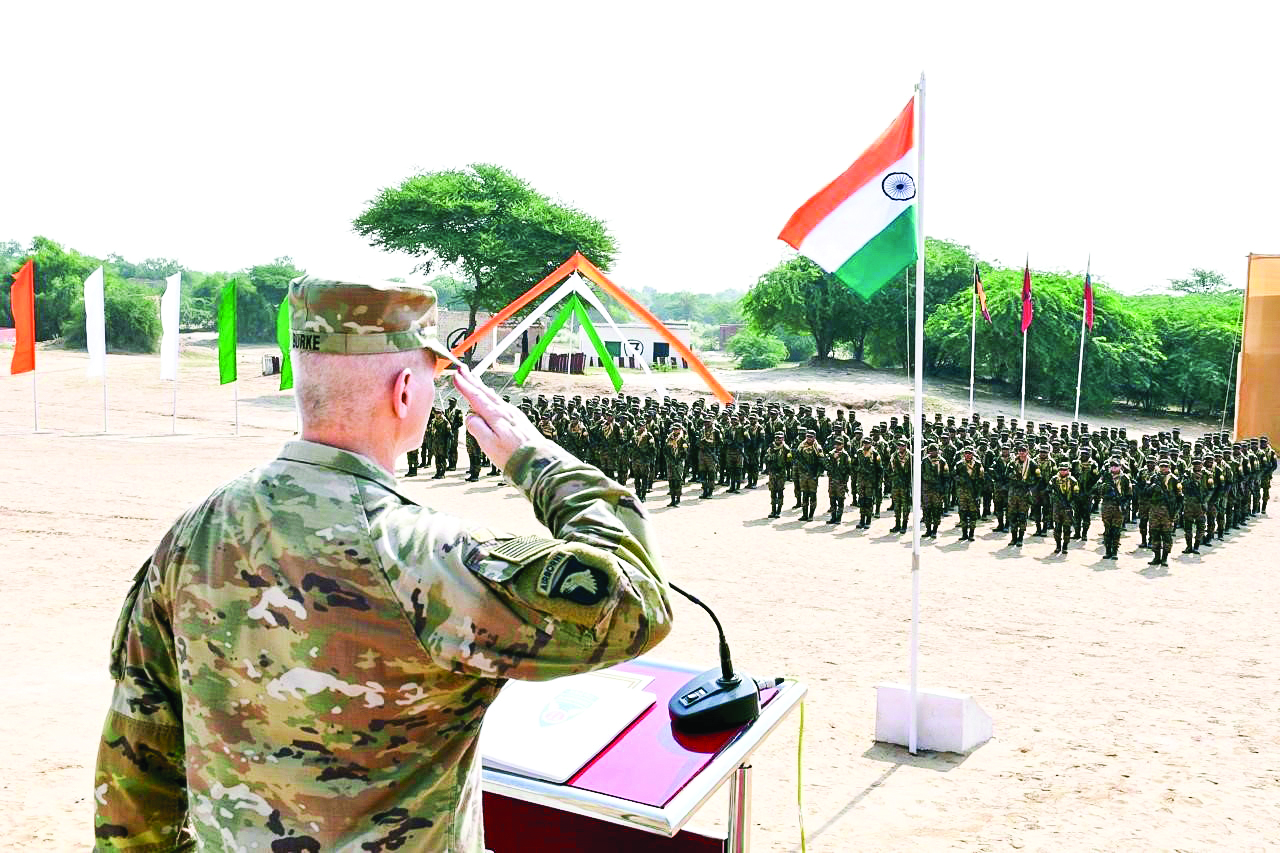Unlike the leadership of the State Department, the Department of Defense is firmly centred on Cold War 2.0 and its focus on the Indo-Pacific.
Scanning newspapers, one can be forgiven for believing that the United States and India are foes that can never be friends. In reality, the US and India have been moving closer ever since Narendra Modi took over as the Prime Minister of India in 2014. Looking back since 2021, it is clear that the Euro-Focused President Biden did not understand the imperative of Washington and Delhi working in unison. His obsession with Russia and with keeping the flames of war rising in Ukraine stem from the Euro-obsession of the White House, harking back to a period when the European Union, joined in a throwback to the 20th century by the US, were indeed at the pinnacle of the global order. By the advent of the 1990s, it was clear that it was once more the East Wind that was becoming stronger as compared to the West Wind. Not that Biden or other western leaders who signed on to the Biden-Johnson crusade against Russia in 2022 noticed. However, even within the Biden administration there were those who understood that only an Indo-US alliance joined by Japan and South Korea could keep the Indo-Pacific “open, free and inclusive” in the words of Modi. The Pentagon is such an institution, as are the agencies dealing with advanced technology, a field where the potential brainpower of India is unmatched. And in a military ground in India, soldiers are furnishing proof of such a development.
The foreign training node in the Mahajan Field Firing Range at Rajasthan is a desolate place, except when reverberating to the sound of artillery. Eardrums face challenges and the ground itself appears to be shaking to the sound of guns being volleyed by 1,200 valiant soldiers, half of them from India, the rest from the US. On 9 September, the 20th edition of Yudh Abhyas began a 21-day joint military exercise between the US and India. Of course, the exercises are not against any third country, least of all the PRC, but solely to refine interoperability in tackling piracy on land, sea and air. While the US has ferried from Alaska to Rajasthan more than 600 personnel of the 11th Airborne Division of the US Army, India has sent a matching number of forces from the Rajput Regiment, and included a sprinkling of soldiers from the other services as well. Since 2014, the effort has been for the armed forces of the Republic of India to operate in a unified fashion rather than in silos, and Yudh Abhyas demonstrates how well Indian forces have learnt that teamwork saves lives and wins wars, while operating in silos may achieve neither, of if so at much greater cost in precious lives. Unlike the leadership of the State Department, which appears to be living in the past era of Cold War 1.0 and its focus on Europe and the Atlantic, the Department of Defense is firmly centred on Cold War 2.0 and its focus on the Indo-Pacific.
Not to mention a superpower predator seeking to illicitly convert much of its expansive waters into space controlled by its own armed forces in defiance of the UN Charter and on international covenants designed to ensure equal access to all in waters such as the ASEAN Sea, which often gets referred to as the South China Sea.
In October, the Navies of the four Quad members will square off in the Bay of Bengal in the Malabar Exercises. Together, the Navies of India, the US, Japan and Australia will jointly work out tactics on the waves as are designed to “cap, roll back and eliminate” any aggressor posing a threat to freedom of navigation, especially of littoral countries, whose exclusive economic zones are being claimed by China under Xi Jinping, whose actions risk the prospect of a war such as would in comparison make insignificant the Ukraine-Russia war being fought since 24 February 2022. A war which has brought ruin to Ukraine, a bonanza for weapons manufacturers and higher consumer prices worldwide. Which is why from almost the start of the war, Prime Minister Modi has been calling on it to end, a call yet to be heeded by NATO, which seems comfortable in the past and uncaring of the risk that a desperate President Zelenskyy may take a step too far, causing the Russians to resort to fullscope rather than restricted conflict. Fortunately, the public in the EU and the US is tiring of the Ukraine war and wants out. Presidential hopeful Kamala Harris ignores such a shift in attitudes at her electoral peril, for the one factor against her is that she retains bits of Bidenitis, including wanting to keep the Ukraine war going.
It is time she refocused on the Indo-Pacific and accepted that this is the primary interest where security and prosperity are concerned.

